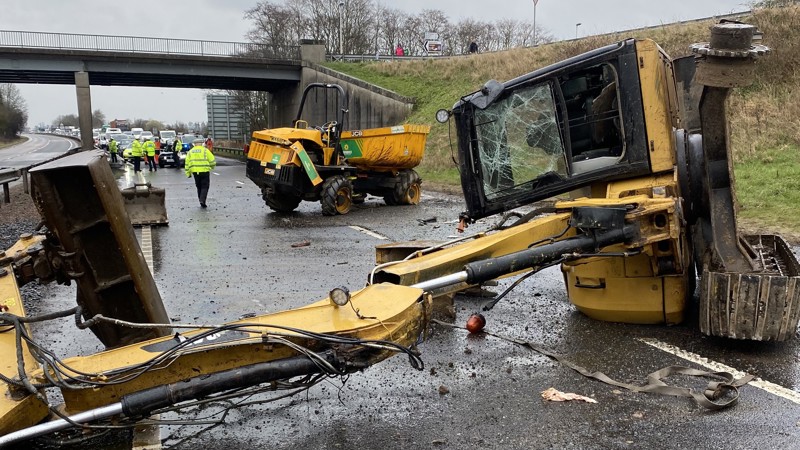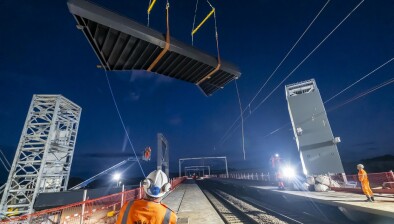Scottish Plant Owners Association publishes best practice guide to bridge strike avoidance

A bridge strike on the A90 at Glencarse last year
The Scottish Plant Owners Association (SPOA) has published a plant industry best practice guide to bridge strike avoidance in an effort to educate the plant industry, reduce the estimated 2,000 road and railway bridge strikes that occur each year, and keep members of the plant industry and all road users safe.
Coming after 80% of the bridge strikes on Scotland’s trunk road network in 2023 involved plant movement on low loaders, the best practice guide has been written in collaboration with Network Rail, Transport Scotland, Police Scotland, QBE Insurance, Sedgwick, AB2K, Blackwood Plant Hire, Currie Contractors, GAP Group, Highland Hammer Hire, Jarvie Plant and Malcolm Group, and follows an industry summit hosted by the SPOA in 2023.
The guide is aimed at all transport departments, transport managers, procurement teams, LGV drivers and companies transporting plant or selling plant, and features guidance that is easy to remember and implement.
There are serious consequences from striking a bridge which can include death or serious injury; train derailment with catastrophic loss of life; serious economic loss; loss of driving licence and livelihood; prosecution; increased insurance premiums; loss of operator licence; damage to corporate reputation; and a £2,500 fine and 11 points added to driving licence.
Speaking about the best practice guide, Mark Anderson, managing director at GAP Group and member of the SPOA Executive Committee, who led on this initiative, said: “We are all proud of this best practice guide on bridge strike avoidance which is much needed. Due to the nature of our industry our load heights are constantly changing, sometimes multiple times each day.
“Whilst best practice guides have been developed by other freight and passenger transport industry partners, these are designed to raise generic awareness for professional drivers and managers of transport companies about the risks and consequences of bridge strikes and provide guidance on how they can be prevented.”
Some best practice ideas published in the guide include:
- The driver should periodically show their depot manager and/or transport manager how to measure a load height, demonstrating their understanding of this procedure.
- Random gate checks should be performed by the depot manager and/or transport manager.
- Provide eLearning opportunities to train managers and drivers so that all operators can meet their responsibilities.
The best practice guide also contains guidance on how to measure the travelling height and load of the vehicle; a bridge height conversion chart and a reminder on traffic signs relating to bridges and permitted vehicle height.
Hazel McDonald, chief bridge engineer at Transport Scotland, added: “We welcome the publication of this guidance and thank the other partners involved for their hard work.
“Road user safety is our top priority on the trunk road network and we recognise the importance of working with the industry to raise awareness of potential issues and play our part in improving road safety.”
Innis Keith, health, safety and environment director, Network Rail, concluded: “Bridge strike incidents can cause death or serious injury to road and rail users while having a serious impact on the operation of the railway, and road traffic.
“After every incident, the bridge needs to be examined to make sure it’s safe and any debris needs to be cleared, sometimes causing significant delays to both road and rail users as well as disruption to the affected community.
“This best practice guide will provide expert guidance on how to avoid striking bridges.”

















